Evaluation of sainfoin accessions exposed to powdery mildew disease at four locations in Iran
DOI:
https://doi.org/10.17138/tgft(9)97-108Abstract
In order to evaluate resistance of sainfoin (Onobrychis viciifolia) to powdery mildew, seeds of 19 accessions were collected from different parts of Iran and sown at 4 locations, i.e. Kheirabad, Khoramabad, Semirom and Tabriz, in 2014. Accessions were evaluated for powdery mildew severity index (DSI), forage dry matter yield (DM), dry matter digestibility (DMD) and crude protein (CP) and water soluble carbohydrate (WSC) concentrations over 4 years. Based on Duncan’s test, accessions 15353 and 3001 showed disease severity index lower than 25% and were nominated as resistant to powdery mildew. Accessions Oshnavieh and Polycross were considered semi-resistant due to their DSI ranging from 25 to 50%. Other accessions were considered susceptible because their DSI was higher than 50%. The resistant accessions (15353 and 3001) with average yields of 3,341 and 3,304 kg DM/ha were ranked as having high DM production, in addition to displaying high DMD plus high CP and WSC concentrations. Severity of powdery mildew infection was linked negatively with all 3 quality traits, i.e. DMD and CP and WSC concentrations. According to Eberhart/Russell regression results, stability of accessions 3001 and 15353 for DSI and DM yield was confirmed across 4 locations. We recommend the use of accessions 3001 and 15353 in future breeding programs to increase resistance to powdery mildew, while at least maintaining yield and quality attributes. Evaluation of other sources of sainfoin germplasm should continue to identify further resistant accessions.




